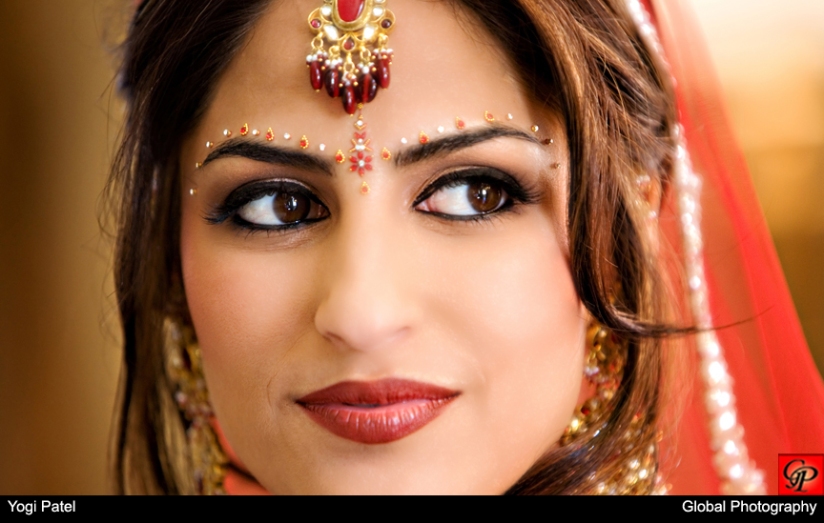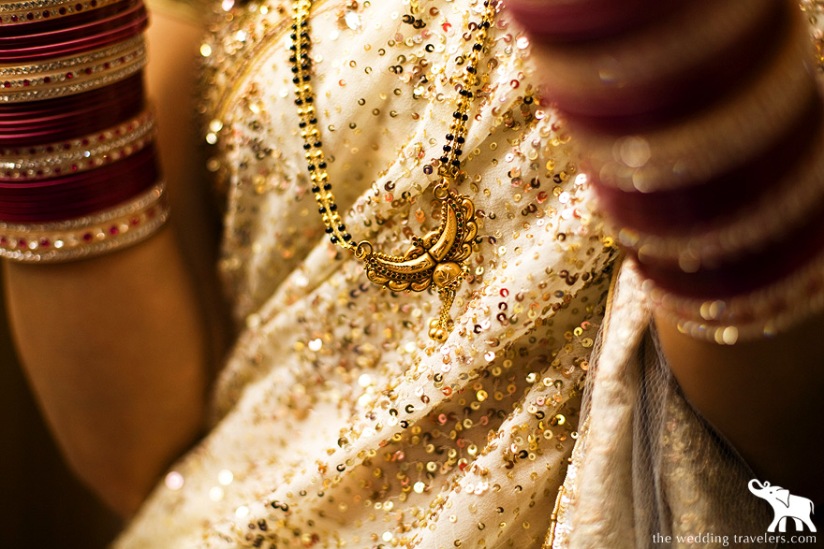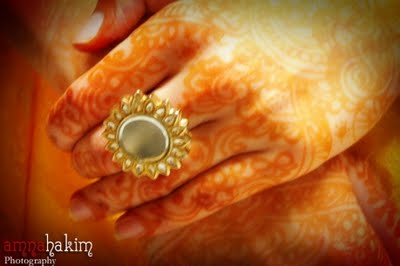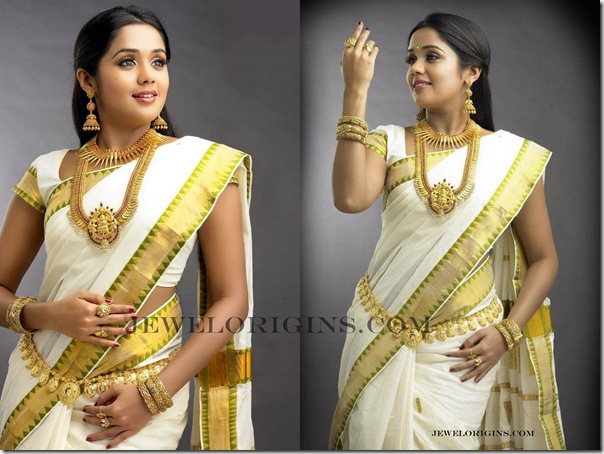Solah Shringar – 16 adornments of a Hindu Bride
Today we are going to talk about the ‘Solah Shringar’ of the Indian Hindu Bride. This bridal tradition has its roots in ancient times, and when embraced, it dictates the sixteen adornments that complete a Hindu bride’s look on her wedding day. We say sixteen adornments as it is the most literal translation of the word Solah (sixteen) Shringar (adornments).
Why sixteen? According to the Hindu mythology, there is a coherent link between a woman’s menstrual cycle and the lunar cycle. While this theory has been ousted by scientists in the 20th century, its influence on Indian culture still remains. The tradition of using sixteen adornments in the Solah Shringar was crafted to nullify the effect of the sixteen phases of the moon, which in turn was believed to be connected to a women’s menstrual cycle.
There is no defined list of the sixteen ornaments and accessories used, but the most prominent ones are covered in this article.

The Ceremonial Bath
The bride is given an elaborate bath on her wedding day, which itself is a ritual followed traditionally. Her hair is first oiled with aromatic oils and a paste of milk, haldi (turmeric), sandal powder, and gram flour is applied on her face, hands, and legs. After this, she is bathed and her hair is washed with a paste made from medicinal plants like Brahmi, Shikakai, Aloe Vera, Bhringraj and Amla. There is no denying the glow radiated by a bride who goes through with this ceremonial bath.
Shaadi ka Joda (Wedding Dress)
The Shringar starts with the wedding dress. For Hindu brides, the dress is usually a sari of bright color, heavily embroidered in golden thread. Wedding dresses may vary from sari, lehenga, salwar suit etc; depending on which part of India the bride’s family hails from.
Keshapasharachana (Hairstyle)
Kesh means hair, pash means flock, and rachna means arrangement. A braid, according to ancient mythology, symbolizes India’s three rivers (three plaits) – Ganga, Yamuna, and Saraswati. It also symbolizes the trinity of Brahma, Vishnu, and Shiva. There is also another theory: One strand represents the bride’s father’s house, the second stands for her in-laws’ house, and the third represents the bride herself who unities both these families.
Gajra (Flowers)
Bride’s hair is adorned with flowers and accessories. The flower usually used is Jasmine.
Mangtika
Mangtika is an accessory worn on the central parting of the hair up to the forehead. The centre part of the forehead is believed to house the ajnachakra and it stands for preservation. This symbolizes the status of women as the preservation of the order of human race. Today, there are different variations of Mangtika. A Mangtika with chains tied along the hairline is one kind, which highlights the brides face.
Sindoor
Sindoor or Vermillion is symbol that indicates a woman is married. It is applied on the central parting of the hair. The powder is red in color which symbolizes fertility and regenerative power of women. It is also called Suhaag and is considered a sacred symbol. Sindoor is put for the first time by the groom during the wedding rituals. In some Hindu cultures, Sindoor should be adorned by a married woman at all times.
Bindi
Bindi is put on the centre of the bride’s forehead. Bindi has huge religious implications. The centre of the forehead is believed to be where the mystical third eye is, and it represents fire. Our eyes are capable of seeing the present, whereas the third eye helps in seeing the future. According to certain Hindu traditions, Bindi also indicates that a woman is married.
Kohl (Kajal)
Kajal is a black product drawn on the inner and outer rim of the bride’s eyelids, accentuating and highlighting her eyes. It is often homemade, and if the words of Wikipedia can be taken into account, this is how it’s done: “Preparation of homemade kajal begins with dipping a clean, white, thin muslin cloth, about four by four inches square, in sandalwood paste or the juice of Alstonia scholaris (Manjal karisilanganni), which is then dried in the shade. This dip and dry process is done all day long. After sunset, a wick is made out of the cloth, which is used to light a mud lamp filled with castor oil. A brass vessel is kept over the lamp, leaving a little gap, just enough for the oxygen to aid the burning of the lamp. This is left burning overnight. In the morning, one or two drops of pure ghee (clarified cow’s butter) or castor oil is added to the soot which now lines the brass vessel. It is then stored in a clean dry box. All the ingredients used in this preparation (sandalwood/Manjal karsilanganni, castor oil, ghee) are believed to have medicinal properties.”
Nath (Nose Ring)
Nath is one of the most traditional and ethnic accessories. In some traditions, nose rings are a symbol of a married woman and hence are expected to be worn by married women all the time.
Karn Phool (Ear Rings)
Earrings beautify the ears of an Indian bride. Karn Phool is a Sanskrit word meaning flower of the ear.
Haar (Necklaces) & Mangal Sutra
Necklaces adorned by a Hindu bride are usually made of gold, and embellished with precious gems and stones. They are usually heavy, with beautiful, elaborate designs, adding to the beauty of the bride. A particular necklace, usually made of black beads and gold, is put by the groom on the bride during the wedding ceremony, and is called the Mangal Sutra. This symbolizes their marriage and is worn by the bride until her death.
Baajuband (Armbands)
Armbands are a symbol of beauty and are worn on the arm of the bride, mostly placed over the blouse. It is usually made of gold with beautiful, precious stones on it. It is believed that armbands keep evil away.
Mehendi
Mehendi stands for love and signifies the strength of the marriage. The bride’s hands and feet are decorated with intricate designs and patterns using the mehendi paste, and is normally applied on the day before the wedding. Once the mehendi is dried and washed off, it leaves behind an orange-red color. This color imparted has several implications, like fertility, strength, emotional bond, sexual connection between the bride and groom, and is considered auspicious. Popular belief is that darker the color of Mehendi, deeper she’ll be adored. Mehendi is also believed to protect one from evil spirits, diseases, misery, and death.
Choodiyan (Bangles)
Bangles adorn the hands of the bride and are another sign of a married woman. Depending on the custom, the bangles are made of either gold, glass of green or red color, or any other metal. In certain traditions, like Sikh and Punjabi, Kaleras are also worn along with the bangles and they should be worn even after the marriage. The new bride is not allowed to do any house chores till she removes these bangles.
Aarsi (Thumb Rings)
Brides wear thumb rings along with the other rings. Most brides have her duppatta or pallu covering her face during the wedding ceremony, obstructing her from seeing her partner. These thumb rings are usually embedded with small mirrors, which help her to see herself and her partner.
Kamarband
Kamarband is an ornament tied around the waist. It is beautiful belt, usually made of gold with precious gems, which accentuate the waist of the bride. It also helps in holding the sari in place.
Payal (Anklets) and Bichuas (Toe rings)
Payal is a thick chain consisting of tiny bells which makes a beautiful, musical sound when the bride walks. Toe rings are usually worn on the second toe of the feet and it is also a symbol of a married woman. The bride is expected to wear the toe rings until her husband’s death. Certain cultures also have something called ‘Mahur’ where a thick red line is drawn around the border of bride’s feet. This is another indication of a married woman.
Ittr (Fragnance)
Ittr is applied on the bride to keep her smelling nice. It also helps her stay fresh through the lengthy wedding rituals.
We hope you enjoyed reading this article, as much as we had fun preparing this. The truth is that every tradition followed in Indian marriages today was crafted for a reason and has serious implications. It is good to be aware of these facts, and the reasons why we do the things we do. Also, this can provide inspiration to modern brides who are lovers of all things Indian, to inculcate these customs (perhaps with a modern twist) to their own beautiful weddings.


















With over numbers of registered users, find someone special of your life. Register your profile and find your compatible match online by downloading "Soulmate-The Match maker” app
ReplyDeletehttps://play.google.com/store/apps/details?id=online.mysoulmate&hl=en_IN
Nice and informative blog! This blog is very worthful for the money spent while visiting a beauty salon with the best reliable way to pamper yourself.
ReplyDeleteIf you want to know about Beauty Parlour near me for Ladies with Price then you can click here.
Thanks for sharing.
Great Post! Thanks for sharing this information with us.
ReplyDeleteBridal Makeup Artist Pune
Thanks for sharing nice information with us.
ReplyDeleteMaharashtrian Bridal Makeup Artist
Thank you for sharing such an Amazing article!! I would love to share at Makeup artist in Gurgaon Group
ReplyDeleteLooking for a flawless bridal look on your big day? Poonam Lalwani, Pune’s top bridal makeup artist, specializes in enhancing natural beauty with stunning makeup, elegant hairstyles, and customized color styling.
ReplyDeleteVisit today: https://www.poonamlalwani.com/